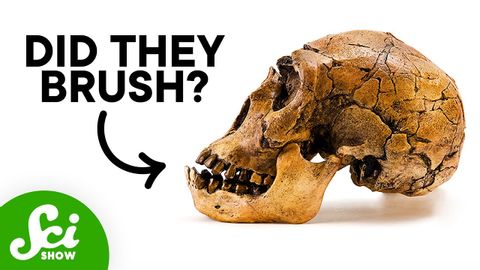想到要看牙醫就好害怕!我們為什麼會蛀牙、又是什麼時候開始長蛀牙的? (When Did We Start Getting Cavities?)
VoiceTube 發佈於 2024 年 07 月 19 日  沒有此條件下的單字
沒有此條件下的單字US /səˈsɛptəbəl/
・
UK /səˈseptəbl/
- adj.易感;易受影響的;易得病的;易受影響的;脆弱的
- v.t./i.出現;估計;我認為〜;認為
- n.身影;(計算過的)數量;肖像;圖;形狀;人物;名人;人影;數字
US /praɪˈɔ:rətaɪz/
・
UK /praɪˈɒrətaɪz/
US /ˈɛvɪdəns/
・
UK /'evɪdəns/
- n. (u.)證據;證據 (法律)
- v.t.表明;證明
